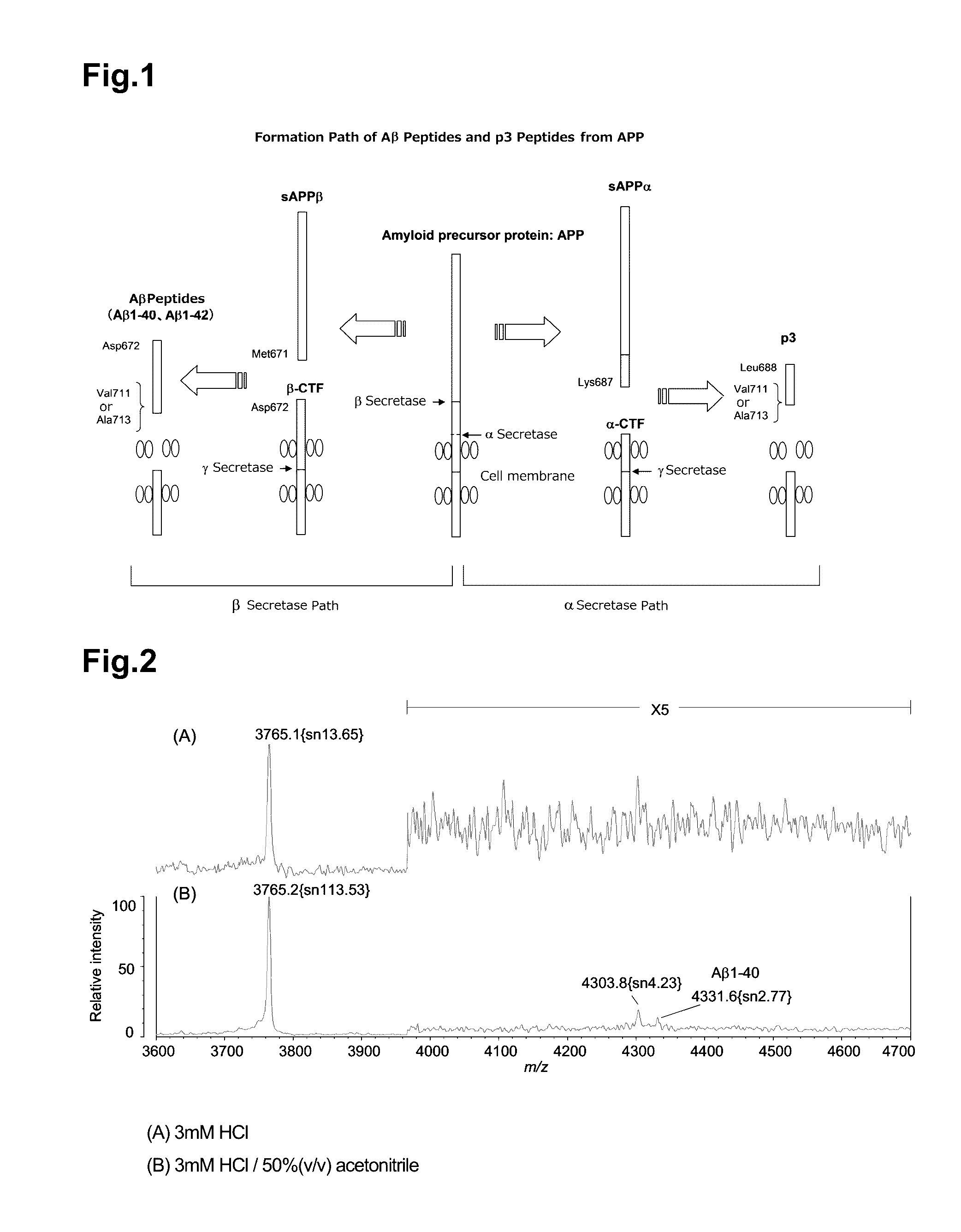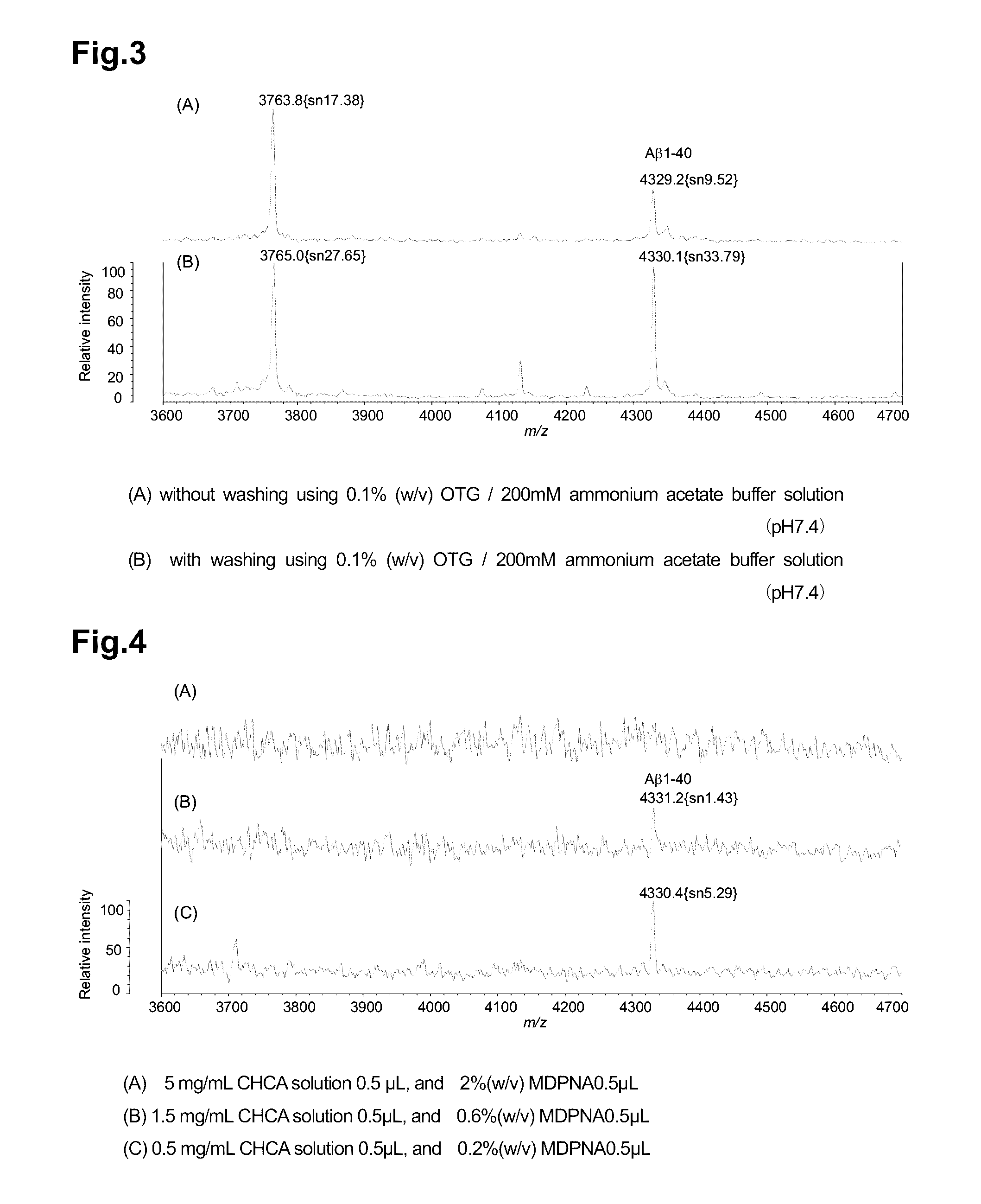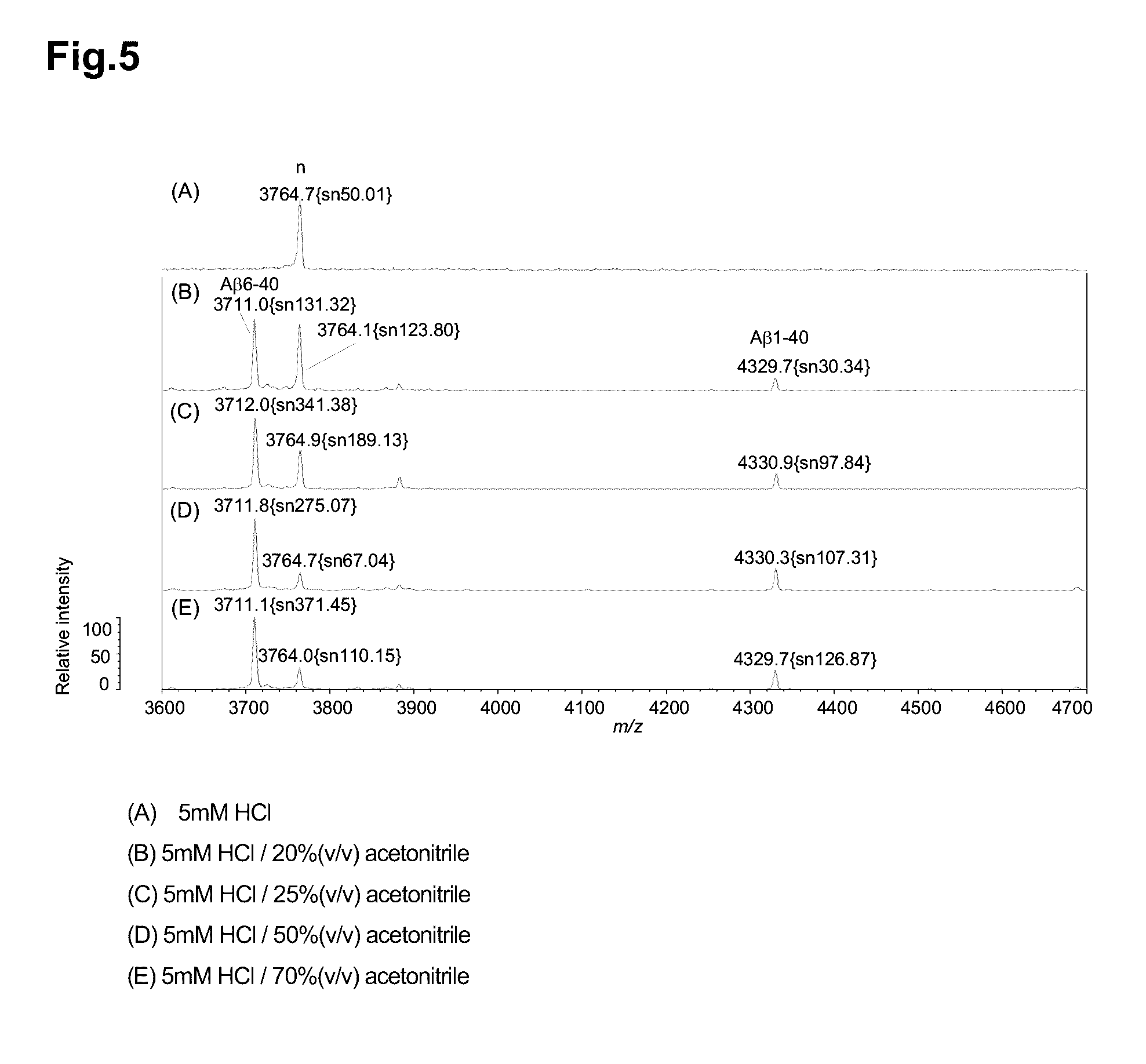Measurement method for app cleavage peptides
a technology of app cleavage and measurement method, which is applied in the field of neuroscience basic research, can solve the problems of inability to collect csf from patients, extreme cognitive impairment, and inability to detect atrophy specific to alzheimer's diseas
- Summary
- Abstract
- Description
- Claims
- Application Information
AI Technical Summary
Benefits of technology
Problems solved by technology
Method used
Image
Examples
example 2
Comparison Between Presence and Absence of Ammonium Acetate Buffer in Washing Step of Bound Body of APP Cleavage Peptides and Antibody-Immobilizing Carrier
[0115]As the washing solution used in the washing step, buffers such as a Tris buffer and a phosphate buffer are often used, and a cationic metal element such as potassium or sodium is contained in the solution. Since contamination of a cationic ion metal element in MALDI-TOF MS measurement reduces a signal of a target peak, it is necessary to avoid contamination of a metal element as much as possible. As a method of avoiding contamination of a cationic ion metal element in MALDI-TOF MS measurement, washing with an ammonium acetate buffer was added in the washing step. Since ammonium ions are volatile, they little reduce a signal of MALDI-TOF MS. After washing with a washing solution (1% (w / v) OTG, 50 mM Tris-HCl, 150 mM NaCl, pH 7.4), an ammonium acetate buffer was used for the purpose of removing a cationic ion metal element in ...
example 3
Improvement in S / N Ratio Depending on Concentration of Matrix Used in MALDI-TOF MS
[0120]By optimizing the concentration of a matrix and / or the concentration of a matrix additive for use depending on the peptide amount to be measured, an excellent MS signal can be obtained. The concentrations of CHCA and MDPNA were examined.
[0121]A pretreatment of immunoprecipitation, and immunoprecipitation were conducted in the following manner.
[0122]Into 250 μL of human plasma (C.C Biotech), an equivalent amount of a binding solution (2% (w / v) n-octyl-β-D-thioglycoside (OTG), 800 mM GlcNAc, 100 mM Tris-HCl, 300 mM NaCl, pH 7.4) was mixed, and then 5 μL of 10% (w / v) PEG 6000 was added thereto. A precipitate contained in this plasma sample was removed by filter centrifugation using Ultrafree-MC, DV 0.65 μm, centrifugal filter devices. 500 μL of Protein G Plus Agarose was washed once with H2O, and then washed three times with a washing solution (1% (w / v) OTG, 50 mM Tris-HCl, 150 mM NaCl, pH 7.4). By ...
example 5
Non-Specific Peak Derived from Plasma Detected by MS
[0132]Verification was conducted whether or not peaks around m / z: 3765 detected in mass spectra obtained in Examples above were caused by non-specific adsorption of molecules derived from a plasma sample with carrier beads.
[0133]First, a sample obtained with dissociation and elution by subjecting 150 μg of 6E10 / 4G8 F(ab′)-immobilizing beads to a dissociating step using 2.5 μL, of 70% (v / v) acetonitrile containing 5 mM hydrochloric acid was measured by MS, but a peak of m / z: 3765 was not detected (FIG. 6(A)). This revealed that a peak of m / z: 3765 is not derived from a molecule dissociated from 6E10 / 4G8 F(ab′)-immobilizing beads themselves and eluted.
[0134]Next, Cysteine-PEG24 beads produced without binding 6E10 and 4G8 in production of F(ab′)-immobilizing beads in Example 1 were prepared. Using 150 μg of Cysteine-PEG24 beads, immunoprecipitation was conducted.
[0135]A pretreatment of immunoprecipitation, and immunoprecipitation were...
PUM
 Login to View More
Login to View More Abstract
Description
Claims
Application Information
 Login to View More
Login to View More - R&D
- Intellectual Property
- Life Sciences
- Materials
- Tech Scout
- Unparalleled Data Quality
- Higher Quality Content
- 60% Fewer Hallucinations
Browse by: Latest US Patents, China's latest patents, Technical Efficacy Thesaurus, Application Domain, Technology Topic, Popular Technical Reports.
© 2025 PatSnap. All rights reserved.Legal|Privacy policy|Modern Slavery Act Transparency Statement|Sitemap|About US| Contact US: help@patsnap.com



